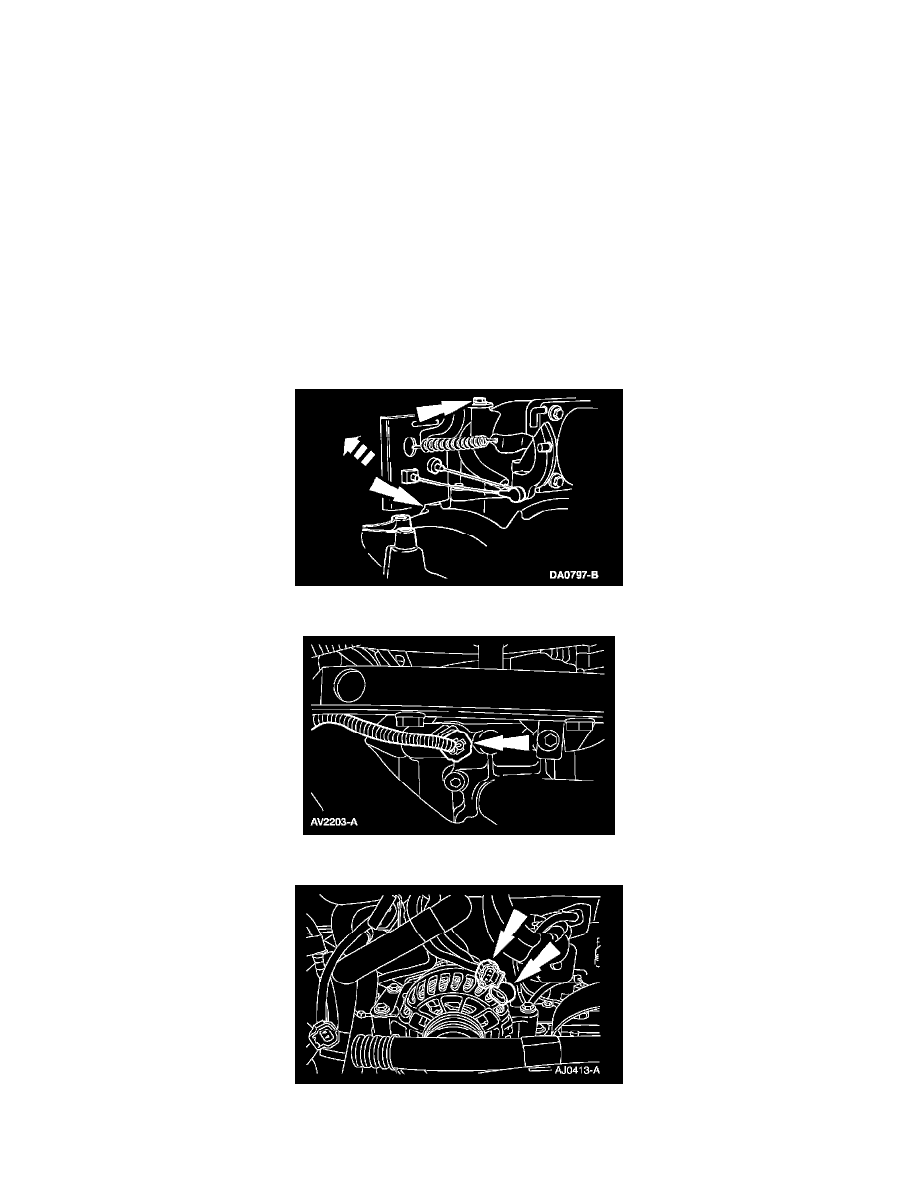F 150 Heritage 4WD Pickup V8-5.4L SOHC VIN Z Bi-fuel (2004)

propane fuel station. Liquid propane fuel vaporizes at normal barometric pressure at temperatures above -42°C (-44°F), and expands to 270 times
its volume as a liquid. Unnecessary venting of propane fuel can create fire and health hazards which could cause personal injury or death.
-
Be alert for situations that may cause the propane fuel system to vent fuel. These include extremely hot days, parking near a space heater, or
hoisting a vehicle up near a ceiling heater. Release of propane fuel in a confined area through the pressure relief valve could occur. The release of
propane fuel in a confined area could result in an accumulation of flammable vapors. If fuel is vented near a heat source, a fire or explosion could
occur.
-
Do not use paint drying ovens for propane-fueled vehicles. The heat of paint drying ovens will increase the pressure in the fuel tanks. This could
cause venting of propane fuel vapor into the oven and result in a fire from the heat or sparks in the electrical equipment. If the fuel is confined
inside an oven an explosion may occur. When refinishing the body panels of a propane fueled vehicle use spot painting and drying methods.
-
If a confined area, such as a lubrication pit, has been subjected to propane gas the area should be inspected for adequate oxygen levels by a local
health department before being entered or personal injury or death may occur.
-
The fuel system pressure must be relieved before any component can be removed. The fuel tanks must be evacuated prior to tank removal.
Removal of components without pressure relief or tank evacuation can cause propane fuel to escape into the air and cause injury or death.
1. Relieve the fuel system pressure in the liquid propane fuel system.
2. Relieve the fuel system pressure in the gasoline fuel system.
3. Remove the engine air cleaner and outlet tube as an assembly.
4. Remove the compuvalve.
5. Remove the gasoline fuel injection supply manifold.
6. Remove the vaporizer and bracket as an assembly.
7. Disconnect the accelerator and speed control cable.
8. Disconnect the engine coolant temperature (ECT) sensor.
9. Disconnect the generator wiring.
